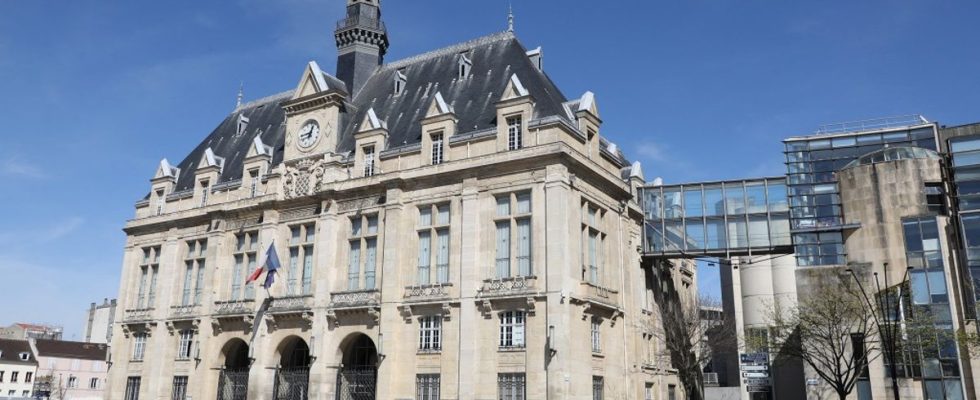The first step for the merger of the municipalities of Saint-Denis and Pierrefitte has just been taken. Announced at the beginning of April, the wish to create a new municipality between the two towns of Seine-Saint-Denis was adopted during extraordinary municipal councils on Thursday 20 April. With its 150,000 inhabitants, the new town will be the second largest city in Ile-de-France, behind Paris. A position of strength, which should offer him enhanced skills. In full institutional reorganization, in particular with the metropolis of Greater Paris under construction and with the new status of public territorial establishment (EPT) of Plaine Commune, these cities find themselves at the second level of intermunicipality.
“The mayors of Saint-Denis and Pierrefitte surely say to themselves that decisions are no longer necessarily taken at the municipal level and that together they will have more weight”, explains Léo Fauconnet, researcher at the Paris Region Institute specializing in institutional issues, and territorial reform. “The new municipality will weigh more in negotiations with the State, institutional partners and for obtaining European funds”, confirms the mayor of Pierrefitte-sur-Seine, Michel Fourcade, in a press release.
Faced with a challenge of territorial recomposition that affects all the future municipalities of Greater Paris, the initiative of two cities could inspire a renewed interest in the creation of new municipalities, which has lost momentum compared to the 2016 period. -2019.
“Sustaining the life of municipalities that could no longer function”
But this prospect is not so obvious. “First of all, it’s not in this type of territory [les grandes communes] expected from merger projects,” recalls the researcher from the Paris Region Institutewho said he was “surprised” by the announcement.
The measure remains first of all a solution devised to correct the French specificity of having a (too) large number of small municipalities on its territory (nearly 35,000). More “We have as many municipalities in France as in the rest of the European Union as a whole”, he specifies. In theory, it allows cities lacking resources or with too few inhabitants to come together to work together.
“If the merger worked so well in our intermunicipal community, it is precisely because we had a complementarity between the municipalities lacking land and those lacking resources”, explains Patrick Septiers, president of the community of municipalities Moret Seine. and Loing (Seine-et-Marne). During his tenure, he merged five communes into one new commune. “It was not the same logic as for these big cities, it was a question of perpetuating the life of municipalities which could no longer function alone”, he adds.
Planned by a territorial reform dating from 2010, the mergers of municipalities are experiencing a craze around 2015, motivated by “significant state aid”, specifies Patrick Septiers. But in reality, between 2010 and 2022, only 2,500 municipalities have come together throughout the territory to form only 787. From now on, the Association of Mayors of France (AMF) only lists two merger projects in progress in Ile-de-France, including that of Saint-Denis and Pierrefitte. “The second is located in the Val-d’Oise between Commeny and Gouzangrez” and would include around 700 inhabitants, details the AMF. No question therefore of a political project.
Affirm leadership
If other large municipalities in the Ile-de-France showed interest in merger projects, “it would be especially in other intermunicipalities, which do not work well, and where there would be a need to assert leadership”, says the researcher from the Paris Region Institute. The example of Évry-Courcouronnes, where the two municipalities were able to benefit from a more substantial political weight, demonstrates this well. “We inquired but there does not seem to be any other movement in this direction, assures the director general of the association Intercommunalities of France, Floriane Boulay. But it is possible that mayors think about it. »
“I think that the mayors of the Ile-de-France will already try to make what exists, namely the intermunicipalities, believes, meanwhile, Léo Fauconnet. There remains a form of delay on the question, even more than for the new municipalities. Intermunicipality designates the different forms of cooperation between municipalities. And “thinking about a new municipality without thinking about its positioning in intermunicipalities” would be counterproductive, adds Floriane Boulay. A finding shared by the General Inspectorate of Administration (IGA), in its report published in September 2022and entitled The new municipalities: a disappointing assessment, uncertain prospects.
It is therefore unlikely that a wave of new municipalities will invade Ile-de-France. This system is also regularly unwelcome by the inhabitants of the towns concerned. On several occasions, in Boulogne-Billancourt and Marne-la-Vallée, the merger projects started were never completed. “It is not two mayors who decide alone, explains Floriane Boulay. We must succeed in creating a movement of the population in this direction. An additional challenge for those considering such a project.

